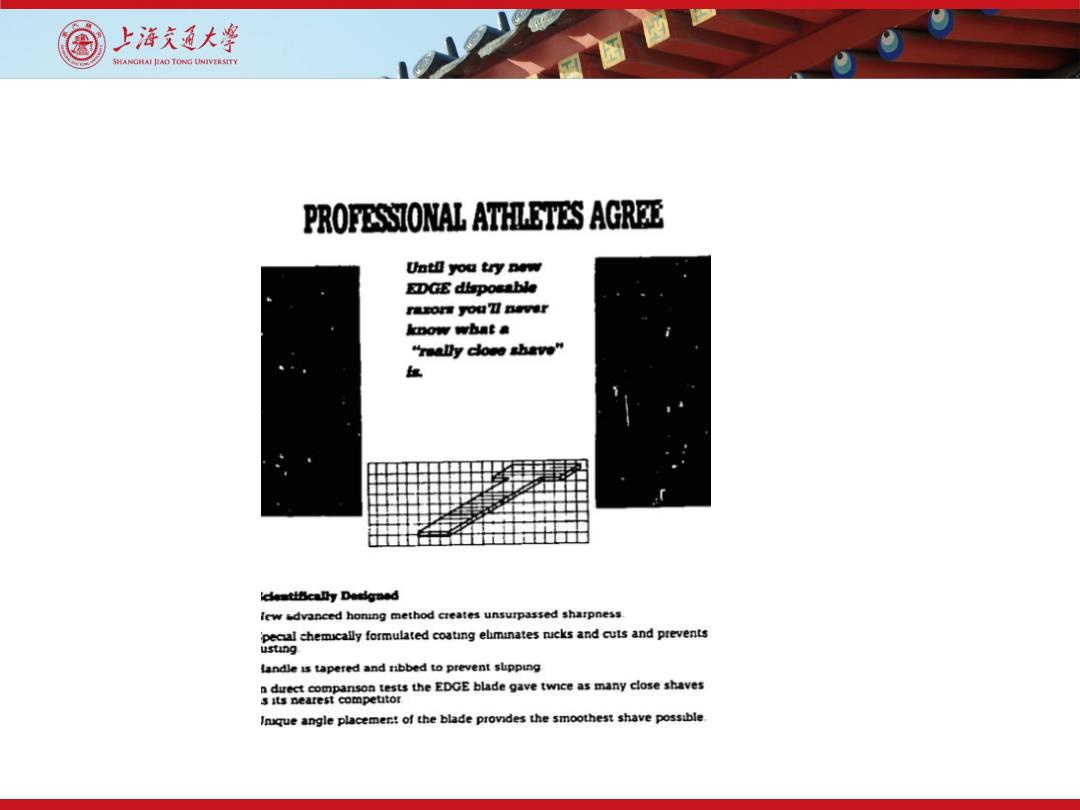
上海疚通大鼻 SHANGHAI JIAO TONG UNIVERSITY PROFESSIONAL ATHLETES AGREE U加t通ou try pew EDGE disposable razor you'll Bevar know what a ally cloee sheve” 血 clestiBcally Designed lew sdvanced honing method creates unsurpassed sharpness pecal chemcally formulated coating elminates ncks and cuts and prevents usting landle is tapered and rbbed to prevent shpping n duect companson tests the EDGE blade gave twice as many close shaves s its nearest competitor Inque angle placemert of the blade provdes the smoothest shave possible
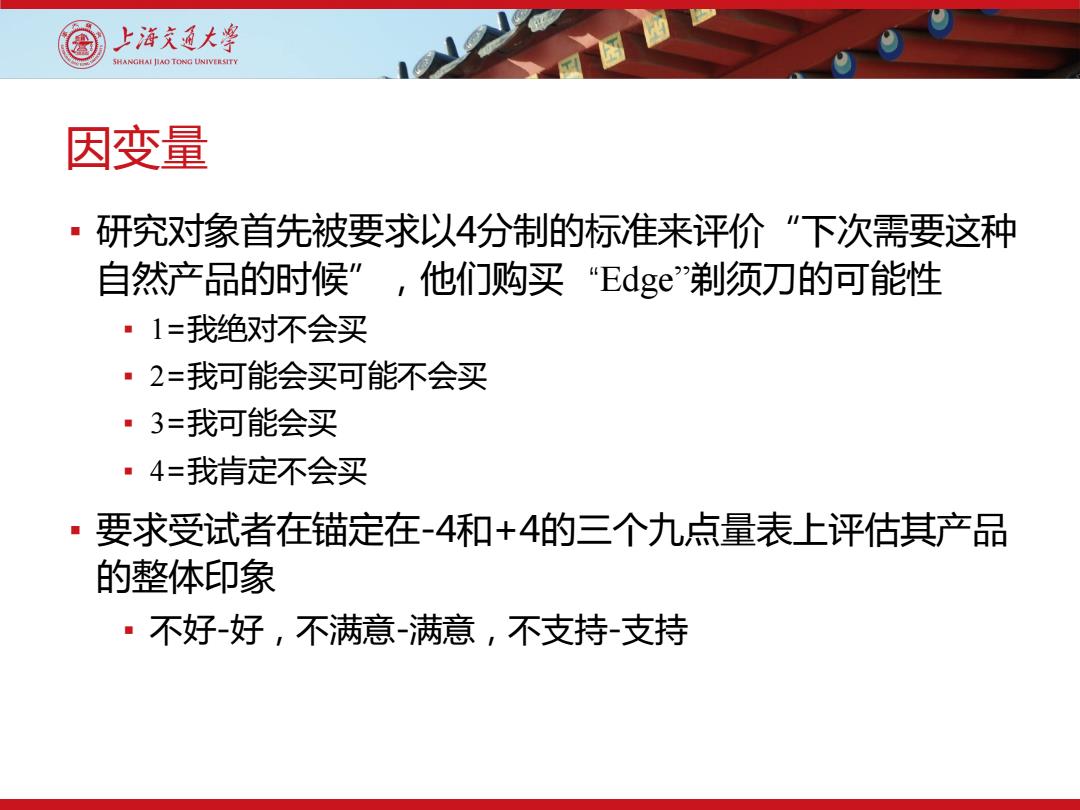
上海疚通大¥ SHANGHAI JIAO TONG UNIVERSITY 因变量 。 研究对象首先被要求以4分制的标准来评价“下次需要这种 自然产品的时候”,他们购买“Edg剃须刀的可能性 ·1=我绝对不会买 ·2=我可能会买可能不会买 ·3=我可能会买 ·4=我肯定不会买 要求受试者在锚定在-4和+4的三个九点量表上评估其产品 的整体印象 ·不好-好,不满意-满意,不支持-支持
▪ 研究对象首先被要求以4分制的标准来评价“下次需要这种 自然产品的时候” ,他们购买“Edge”剃须刀的可能性 ▪ 1=我绝对不会买 ▪ 2=我可能会买可能不会买 ▪ 3=我可能会买 ▪ 4=我肯定不会买 ▪ 要求受试者在锚定在-4和+4的三个九点量表上评估其产品 的整体印象 ▪ 不好-好,不满意-满意,不支持-支持 因变量
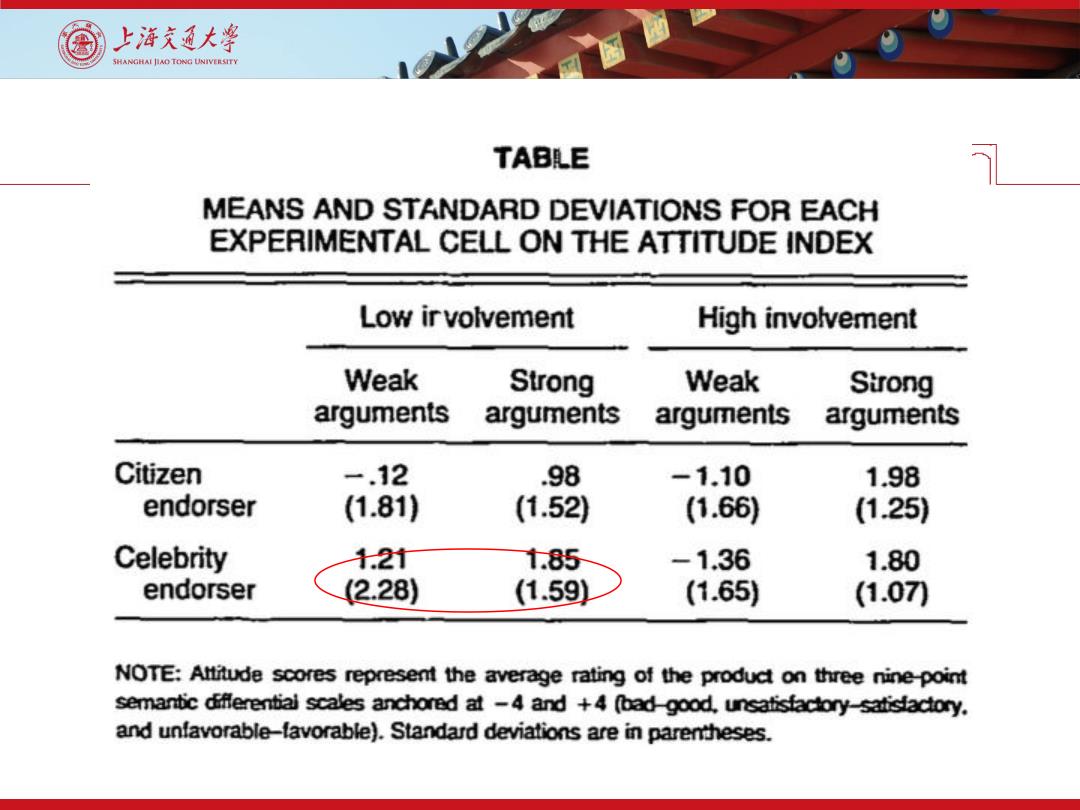
上海疚通大鼻 SHANGHAI JIAO TONG UNIVERSITY TABLE MEANS AND STANDARD DEVIATIONS FOR EACH EXPERIMENTAL CELL ON THE ATTITUDE INDEX Low irvolvement High involvement Weak Strong Weak Strong arguments arguments arguments arguments Citizen -.12 .98 -1.10 1.98 endorser (1.81) (1.52) (1.66) (125) Celebrity +.2T 1.85 -1.36 1.80 endorser (2.28) (1.59) (1.65) (1.07 NOTE:Attitude scores represem the average rating of the product on three nine-point semantic differentiai scales anchored at -4 and +4(bad-good.unsatisfactory-satisfactory. and unfavorable-favorable).Standard deviations are in parentheses
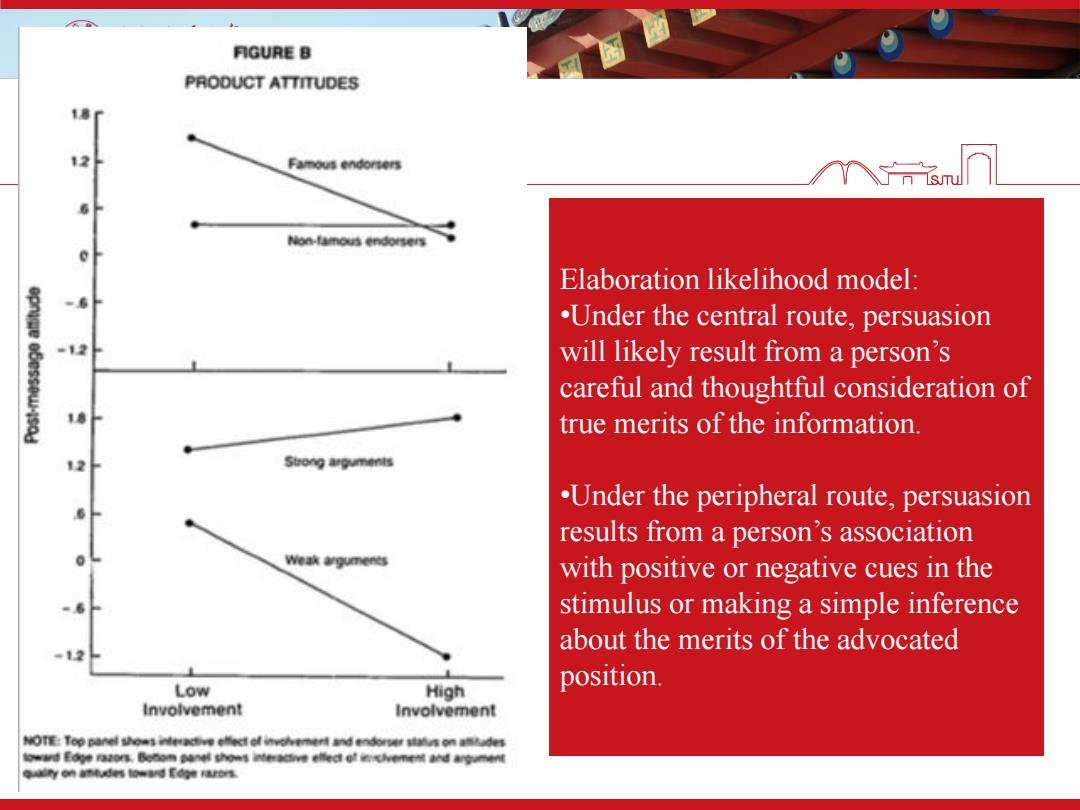
AIGURE B PRODUCT ATTITUDES Famous endorsers Non-famous endorsers Elaboration likelihood model: Under the central route,persuasion 12 will likely result from a person's careful and thoughtful consideration of true merits of the information. Strong arguments Under the peripheral route,persuasion results from a person's association Weak angumen购 with positive or negative cues in the stimulus or making a simple inference about the merits of the advocated Low High position. Involvement Involvement
Elaboration likelihood model: •Under the central route, persuasion will likely result from a person’s careful and thoughtful consideration of true merits of the information. •Under the peripheral route, persuasion results from a person’s association with positive or negative cues in the stimulus or making a simple inference about the merits of the advocated position
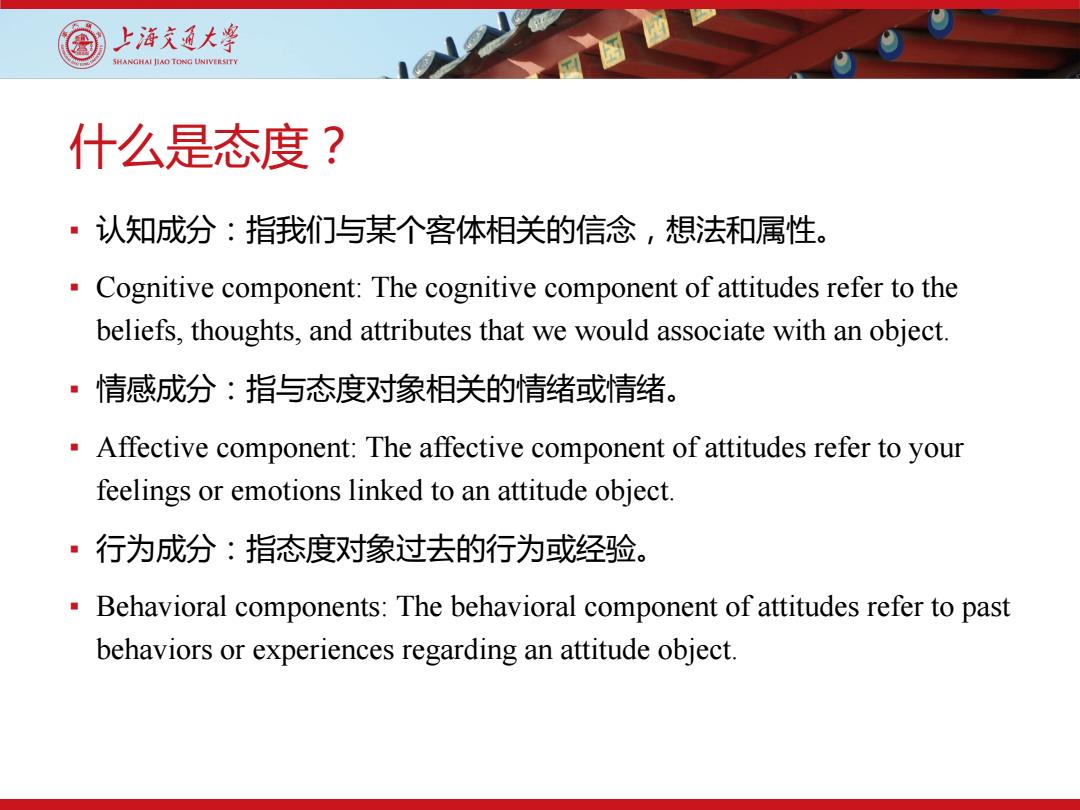
上海疚通大¥ SHANGHAI JIAO TONG UNIVERSITY 什么是态度? ·认知成分:指我们与某个客体相关的信念,想法和属性。 Cognitive component:The cognitive component of attitudes refer to the beliefs,thoughts,and attributes that we would associate with an object. ·情感成分:指与态度对象相关的情绪或情绪。 Affective component:The affective component of attitudes refer to your feelings or emotions linked to an attitude object. ·行为成分:指态度对象过去的行为或经验。 Behavioral components:The behavioral component of attitudes refer to past behaviors or experiences regarding an attitude object
▪ 认知成分:指我们与某个客体相关的信念,想法和属性。 ▪ Cognitive component: The cognitive component of attitudes refer to the beliefs, thoughts, and attributes that we would associate with an object. ▪ 情感成分:指与态度对象相关的情绪或情绪。 ▪ Affective component: The affective component of attitudes refer to your feelings or emotions linked to an attitude object. ▪ 行为成分:指态度对象过去的行为或经验。 ▪ Behavioral components: The behavioral component of attitudes refer to past behaviors or experiences regarding an attitude object. 什么是态度?